On the dias-Dr. M P Narayanan, President, Centre for Science, Development & Media Studies; sitting (L-R) Sandeep Bangia, Director Business Development – Government, Oracle, Dr. Ravi Gupta, Editor-in-Chief, egov magazine & Executive Director, Centre for Science, Development & Media Studies, Saugata Roy, Honourable Minister of State for Urban Development , GOI, Vinod C. Menon, Member, National Disaster Management Authority, S R Rao , Additional Secretary, Department of Information Technology, GOI, Niraj Prakash, Director, Public Sector Marketing, Microsoft India
egov, in association with National Institute of Urban Affairs (NIUA) and National Institute for Smart Government (NISG) organised Smart City 2010- the national convention on information and communication technology (ICT) in Urban Governance in the Capital on January 20, 2010. The convention contemplated on issues, challenges and opportunities around planning and building integrated and smart cities in light of technological intervention. Inaugurated by Saugata Roy, Minister of State for Urban Development, Government of India, Smart City 2010 proceeded with the inaugural session which was subsequently followed by three sessions.
The convention brooded upon the need of vision from the top leadership, shifting focus of urban reforms from mere enhancement of service delivery and internal effi ciency of urban local bodies to a long term and integrated planning of city infrastructure, equitable and inclusive development of urban and as well countryside regions, easy and 24×7 access to government by the citizen through web portals, promoting the participatory form of governance through Web 2.0, need for government process re-engineering before process automation, proactive information disclosure and fi xing of accountability.
INAUGURAL SESSION: VISION FOR SMART CITY

Delivering the inaugural address, Saugata Roy said, “By 2030, nearly 40% of the Indian population would be urban. Globally, as per the World Bank estimates, half of the global population is already residing in urban areas and in the decades to come, proportion will rise to whooping 60 percent.” Given the enormous pressure that the shifting population trend would put on cities in days to come, the very issue of urban planning assumes importance and therefore to make cities better planned, more livable, citizen centric, connected and smarter, with a judicious blend of good governance, the use of ICT is paramount, he added.
The minister said the JNNURM- fl agship programme under Ministry of Urban Development, was launched in 2005 with the goal of achieving reforms driven, fast track and planned development of identifi ed mission cities.

The reforms has a sound foundation based on corner stones of equity and effi ciency. With these guiding principles in mind, the mission attempts to establish an enabling environment for urban transformation through reforms and improvement in systems and processes.
Four years after the launch of mission, “I can confi dently say that the mission has triggered the process of enabling environment for the growth of cities by improving urban governance, augmenting civil infrastructure, enhancing effective delivery of services, water supply sewer and drainage system and solid waste management,” Roy further added.
Under JNNURM, national mission mode project (NMMP) on e-Governance in municipalities has also been taken up. It aims at creating economically productive, effi cient, productive, equitable and responsive cities in an integrated framework with focus on economic and social infrastructure, basic services to urban poor, urban sector reforms, and strengthening of municipal governments and their functioning. The NMMP envisages covering of all ULBs in 35 selected cities spread over 17 states, having population of 10 lakhs and above. That is category A and B of the JNNURM scheme. e-Governance is one of the mandatory reforms under JNNURM. It is expected to take care of the implementation of the minimum eight basic services stated in the 12th Schedule
of 74th Constitutional Amendment.
Apprising about the outcome based approach propagated by the Ministry of  Urban Development, which formulates the service level benchmarks for e- Governance in ULBS, Roy opined, “The benchmark defi nes the measurement of performance indicator in an unambiguous manner for minimum of eight services. The ULBs are to look at these bench marks in service delivery through e-Governance mode.” He further said that the Ministry is also planning to give awards to cities for their performance. The involvement of private sector in municipal services shall result in improvements in service delivery. Hence, PPP model could be leveraged for effective implementation and monitoring of the reforms and projects, ensuring the effi cient functioning of the government bodies, citizen service delivery and friendly environment for businesses.
Urban Development, which formulates the service level benchmarks for e- Governance in ULBS, Roy opined, “The benchmark defi nes the measurement of performance indicator in an unambiguous manner for minimum of eight services. The ULBs are to look at these bench marks in service delivery through e-Governance mode.” He further said that the Ministry is also planning to give awards to cities for their performance. The involvement of private sector in municipal services shall result in improvements in service delivery. Hence, PPP model could be leveraged for effective implementation and monitoring of the reforms and projects, ensuring the effi cient functioning of the government bodies, citizen service delivery and friendly environment for businesses.
Speaking on the characteristics of a smart city, Vinod Chandra Menon, Member, National Disaster Management Authority said studying most of the European cities, the six characteristics of smart cities that can be drawn are smart governance, economy, mobility, environment, people and living.
Highlighting the dichotomy between the vertical growth of cities and lateral expansion of cities with poor service delivery system, Vinod Menon said, “On the one hand, we are a part of global process of growth, where you have mega
cities, which are vertically growing like Burj Dubai or Burj Khaleefa in Dubai or Petronas Tower in Malaysia. On the other, you have sprawling lateral or horizontal shifting of our cities, along with the old problem in terms of looking at our own levels of public delivery systems in rural areas.”
Raising the issue of anonymity existing in an urban centre, Menon said, “If you would see the millions of people transiting in cities daily for work and the large unorganised sector, you will fi nd that there is large anonymity prevailing in city. With the allocation of Unique Identifi cation Number to each citizen, the issue of wide spread anonymity is being attempted to resolve.”
Articulating the defi cits in advanced infrastructure of the country, Menon pointed that its high time that people are offered with Wi-Fi access in public transportations. Intelligent Transportation Systems in urban transportation is another such area. Stating the signifi cance of Web 2.0 tools in governance, he averred, “ICT can enable participatory model of governance. Citizen can send their feedback to authorities and authorities can revert to citizens on the actions further taken.”
Menon proposed that the common services centres (CSC) could be utilised for 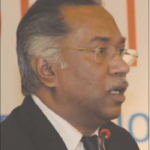 spreading awareness on various issues like National Rural Employment Guarantee Scheme(NREG), National Rural Health Mission (NRHM), H1N1, climate change etc. without much government spending, unlike on television, where placing an advertisement even for 30 seconds would cost millions. “Unfortunately”, he sighed, “there is no content available to CSCs. In this reference, the NeGP presents a huge business model.”
spreading awareness on various issues like National Rural Employment Guarantee Scheme(NREG), National Rural Health Mission (NRHM), H1N1, climate change etc. without much government spending, unlike on television, where placing an advertisement even for 30 seconds would cost millions. “Unfortunately”, he sighed, “there is no content available to CSCs. In this reference, the NeGP presents a huge business model.”
Linking the evolution of cities with good transportation facility and infrastructure, S R Rao, Additional Secretary, Department of IT, Government of India said in fi rst phase the historical cities have been either on rivers or coasts primarily because the socio-economic wealth creation started with interaction and transportation to new places. The second phase of urbanisation came with laying down of rail roads during industrialisation period. Now, the third phase has come with the robust digital infrastructure and connectivity. Its the next level of infrastructure that would create opportunities for people in living in hinterland to have facilities of urban areas. urban areas for availing government to citizen services.”
Stating the “crude reality” about the infrastructure of the country, Rao opined, “Before we move towards the next level of cities, its important to understand the current level of urbanisation. Its interesting to note that 40 % of the Reiterating what former Indian President APJ Abdul Kalam said on providing urban amenities in rural areas, Rao said, “Its an imperative to provide the digital connectivity to the rural areas so that residents may not have to go to treated water is unaccounted for. 40% of the urban population lives in slum areas. Mere 50 % of the total garbage produced is scientifi cally treated. Almost 80% of the electricity consumption is on pumping systems- both on water and sewage. The turbines and propellents used are age old stuffs.”
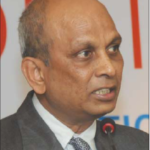 Dubbing the state of uniformity in delivery of citizen services by urban local bodies in states as non-encouraging,Rao said, “In Gujarat, for example, where I had opportunity to work in urban development, there are 163 ULBs across the state.
Dubbing the state of uniformity in delivery of citizen services by urban local bodies in states as non-encouraging,Rao said, “In Gujarat, for example, where I had opportunity to work in urban development, there are 163 ULBs across the state.
Though the act is same for all of the state, there are 163 types of water connection forms in the state. One of the reasons behind this is that the capacity of civil servant is limited. Secondly, each ULB decides how to deliver a utility to citizen.” Taking note of the state of affairs in ULBs, the Ministry of Urban Development has taken step for adoption of state level software applications for all ULBs in a state which will insure uniformity and compliance to standards.
Niraj Prakash, Director, Microsoft laid stress on the need for having focus on 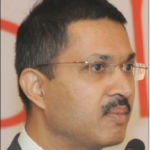 long term planning for making smart cities with world class standards and benchmarks and designing sustainability around these smart cities. Besides, he also emphasised on need for equitable and inclusive growth, so as to develop the rural and hinterland areas of the country and stop the migration of population to handful of mega cities, thereby reducing the pressure on limited infrastructure of the urban centres. Complaining on the state of e-Government in ULBs where information and communication technology (ICT) is being narrowly used for mere generation of certifi cates and licenses and enhancing internal effi ciency,
long term planning for making smart cities with world class standards and benchmarks and designing sustainability around these smart cities. Besides, he also emphasised on need for equitable and inclusive growth, so as to develop the rural and hinterland areas of the country and stop the migration of population to handful of mega cities, thereby reducing the pressure on limited infrastructure of the urban centres. Complaining on the state of e-Government in ULBs where information and communication technology (ICT) is being narrowly used for mere generation of certifi cates and licenses and enhancing internal effi ciency,
Prakash said although “JNNURM has identifi ed eight areas of citizen services, we need to jump start on long term planning. IT has a big role to play- in creating visibility in sustainability of resources.” “However, our commissioners severely lack in terms of having visibility that they might have as to what kind of resources availability or depletion they are with. What is the potential energy scenario- seven years down the line. What is the impact of climate change? Unfortunately, today the use of IT systems are limited to generating licenses, certifi cates and enabling accrual based accounting system. The agencies involved in managing the governance of a city numbers between 15 to 20. It means these agencies need to share the IT infrastructure.”
Sandeep Bangia, Director Business Development- Government, Oracle put forth  that the role of IT is not just an enabler but a tool which can transform cities in smart cities. Smart city can be defi ned as a place where businesses feel more comfortable in making it profi table. A place where state of the art facilities in health, education and security and safety can be provided. The citizen and businesses may get a single view of the government. A place where citizen may have access to information and when it comes to security threat, it may proactively identify and respond in time, to any of the natural or man made disasters.
that the role of IT is not just an enabler but a tool which can transform cities in smart cities. Smart city can be defi ned as a place where businesses feel more comfortable in making it profi table. A place where state of the art facilities in health, education and security and safety can be provided. The citizen and businesses may get a single view of the government. A place where citizen may have access to information and when it comes to security threat, it may proactively identify and respond in time, to any of the natural or man made disasters.
SESSION: ICT INFRASTRUCTURE AND URBAN DEVELOPMENT: OPPORTUNITIES AND CHALLENGES
Chair: Ashis Sanyal, Senior Director, Department of Information and Technology, Government of India Kapil Mohan, Director, Ministry of Power informed about the Restructured Accelerated Power Development and Reform Programme (RAPDRP) which seeks to reduce the level of power and monetary loss incurred by the government.
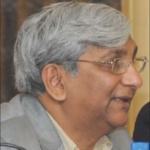 He attributed the unclear picture of the number of consumers in power sector for the government’s inability to plan the clear distribution of the power supply for the citizens and for the unannounced load shedding, in addition to the poor quality of power.
He attributed the unclear picture of the number of consumers in power sector for the government’s inability to plan the clear distribution of the power supply for the citizens and for the unannounced load shedding, in addition to the poor quality of power.
To resolve the problem of load shedding, Kapil Mohan stressed on the use of ICT in Power sector- digitisation and the distribution grade to set up the basic electricity audit and the accounting system on the electricity grade.
This will be helpful in giving a clear understanding of the consumption pattern on a real time basis.
He explained, with the use of the automatic reader, at regular intervals, the data can be maintained and it can be checked where the electricity is being lost so that the measure of tackling the problem of electricity is taken up and worked  upon. He further discussed the role of smart meters in making the cities smarter. Terming smart meters as symbiotic tool, he said it benefi ts both the consumer and the supplier. It helps in managing the electricity and reduce the losses and wastage.
upon. He further discussed the role of smart meters in making the cities smarter. Terming smart meters as symbiotic tool, he said it benefi ts both the consumer and the supplier. It helps in managing the electricity and reduce the losses and wastage.
“For the smart/green cities the consumption of the electricity has to be done in a planned way so as to reduce the problem of shortage or the collapse of the grid. To avoid the collapse in the grid, which can bring the daily life to a halt, real time basis intelligent grid is required which would be shifting the load and manage the infrastructure”, Kapil Mohan said.
Ruchin Kumar, Senior Solution Architect, SafeNet pointed to the parallel evolution of the smart cities, and unprecedented proliferation of data and said, “Being an important resource in terms of future planning and legal policies, the protection and the retention of the data is important.” For the security of the data, IT is like an anti-virus, he added. He cited as example the successful implementation of MCA-21 project by the Ministry of Company Affairs which has made mandatory the electronic fi ling of the transactions.
“Being an important resource in terms of future planning and legal policies, the protection and the retention of the data is important.” For the security of the data, IT is like an anti-virus, he added. He cited as example the successful implementation of MCA-21 project by the Ministry of Company Affairs which has made mandatory the electronic fi ling of the transactions.
The organisations like Indian Railway have developed e-Procurement portals where the vendors can submit online tender responses using the digital certifi cates. The e-Procurement projects initiated by many state governments are already successfully running in many southern states and also in West Bengal and Uttar Pradesh. The only hurdle faced in the implementation of the projects is the management of the authentication solution.
Sanjiv Mital, Chief Executive Offi cer- Designate (CEO-Designate), National  Institute of Smart Governance (NISG), Government of India dubbed good governance as more of inclusive, participatory and citizen centric governance. In any e-Governance project there are four major aspects which have to be kept in mind and they are- people, process, technology and resources, he added. He opined that e-Governance projects require better planning and conceptualisation not only at the state but at the central level too. He pointed that the person at the top should be wholly committed to the work and should have a sense of ownership of the work he/she does. Various e-Governance projects are vendor driven, but still the ownership by the top management is important for the successful running of the project
Institute of Smart Governance (NISG), Government of India dubbed good governance as more of inclusive, participatory and citizen centric governance. In any e-Governance project there are four major aspects which have to be kept in mind and they are- people, process, technology and resources, he added. He opined that e-Governance projects require better planning and conceptualisation not only at the state but at the central level too. He pointed that the person at the top should be wholly committed to the work and should have a sense of ownership of the work he/she does. Various e-Governance projects are vendor driven, but still the ownership by the top management is important for the successful running of the project
He noted that many times, the e-Governance becomes individualised or individual driven, which should not be the case. The whole organisation needs to be committed in the project.
He emphasised on the co-ordination between the back offi ce and the front offi ce for the successful running of the e-Governance projects.
Referring proactive information disclosure (through web portals), accountable,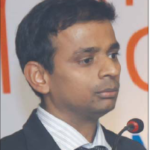 transparent and open government system as some of key characteristics of an advanced and smart city, Amit Prasad, Director IT, New Delhi Municipal Corporation (NDMC) stressed, “Residents should know the people responsible for delivery of particular services.
transparent and open government system as some of key characteristics of an advanced and smart city, Amit Prasad, Director IT, New Delhi Municipal Corporation (NDMC) stressed, “Residents should know the people responsible for delivery of particular services.
There should be time frame and a mechanism for further follow up actions, in case the authorities fail to perform.” For example, NDMC is issuing birth and death certifi cates, in accordance to the service level agreements (SLA) issued by the Prime Minister’s Offi ce (PMO). In case if NDMC fails to deliver this service on time, it has to pay some amount to the citizen as penalty. From the time this system has been put in place, things have improved, considerably.
Tejinder Laschar, Senior Economic Advisor, Ministry of Commerce & Industry, 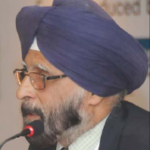 Government of India said that for the implementation of balanced growth oriented plans, and bridging of the economic divide, ICT has an all pervading role to play. The tardy process of addressing problems from fi les to fi les, from man to man – involving physical interactions – is a mater of past. ICT eliminates the need for physical interaction and standardises the service delivery and work processes. He also emphasised on the need for integrated infrastructure, real time information of G2G and G2 C processes, use of GIS and GPS – in increasing the visibility of the existing resources- and better decision making in urban governance.
Government of India said that for the implementation of balanced growth oriented plans, and bridging of the economic divide, ICT has an all pervading role to play. The tardy process of addressing problems from fi les to fi les, from man to man – involving physical interactions – is a mater of past. ICT eliminates the need for physical interaction and standardises the service delivery and work processes. He also emphasised on the need for integrated infrastructure, real time information of G2G and G2 C processes, use of GIS and GPS – in increasing the visibility of the existing resources- and better decision making in urban governance.
SESSION: EMPOWERMENT AND CAPACITY BUILDING
Chair: Manish Mohan, Director- Department of Administrative Reforms and Public Grievances (DARPG) Manish Mohan explained how the Department of Administrative Reforms and Public Grievances is involved in handling the reforms of the urban sector. He said: The population of India will double in 30 years and to have a proper design of the system and the governance in the times to come, local urbanisation is required. As more and more are coming to live in the cities, it is important to take into consideration the needs, the aspirations and the requirements of all the citizens.
Articulating the need for having citizen centric approach in city governance,Mohan said, “The citizen centric services were given importance in 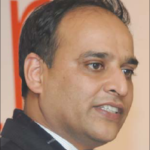 the 12th report of the 2nd administrative reform commission, and so the citizen centric services have to be the core of any government, whether at the local level or the state level. What ever steps the government takes, it has to be in the conformity with citizen convenience.”
the 12th report of the 2nd administrative reform commission, and so the citizen centric services have to be the core of any government, whether at the local level or the state level. What ever steps the government takes, it has to be in the conformity with citizen convenience.”
He informed that in DAPRG, the focus is on developing mechanisms and framework for improving service delivery from the citizens point of view. Talking about a case study on Shimla Municipal Corporation, he noted: If fi nancial help is given to the municipalities and it is not utilised, its primarily because the local governance bodies lack the required capacity.
Most of the times, when the funds are available, it is used in the development of the infrastructure instead of the capacity building. It is important for the governing body to be smart to make the city smarter.
Dr. Sanjeevan Bajaj, CEO, FICCIQuality Forum, said that for the better delivery  of the services to the citizens, Sarvotam Model was build up which will help in making things more transparent to the people. With the help of this model,the citizens will get a clear picture and the information and knowledge of the services which will be available to them including the time period of the service delivery. She highlighted that the prior information of the services is important and should be publicly known so that the citizens are able to reap its benefi ts.
of the services to the citizens, Sarvotam Model was build up which will help in making things more transparent to the people. With the help of this model,the citizens will get a clear picture and the information and knowledge of the services which will be available to them including the time period of the service delivery. She highlighted that the prior information of the services is important and should be publicly known so that the citizens are able to reap its benefi ts.
Lokesh Sharma, Manager, Oracle India spoke on good governance, which aims at better delivery of services to the citizens. He said though lot of new ICT  projects are being launched in the country but most of them don’t get the start because of the many challenges that have to be faced. He said that its high time when there must be a shift from electronic Government to innovative, integrated and intelligent Government, which will be based on modern IT infrastructure, increased effi ciency and transformation of government service delivery to citizen centric delivery.
projects are being launched in the country but most of them don’t get the start because of the many challenges that have to be faced. He said that its high time when there must be a shift from electronic Government to innovative, integrated and intelligent Government, which will be based on modern IT infrastructure, increased effi ciency and transformation of government service delivery to citizen centric delivery.
Pradeep Prappil, Senior Programme Manager, Microsoft India said, “Technology is a good way to enhance the operations, to improve the services,  and to deliver higher quality. However, before we move towards smart city, orautomate government services, one has to remember the target audience. When we talk about citizen centric approach, its very important that we know the profi le of the citizen. If the majority of the citizens are uneducated and if you have sophisticated systems which has applications in English, it wont help the citizen.” Therefore its necessary to deploy the IT solutions in multiple languages so that the people from from different language speaking background may understand and take advantage from it, he added.
and to deliver higher quality. However, before we move towards smart city, orautomate government services, one has to remember the target audience. When we talk about citizen centric approach, its very important that we know the profi le of the citizen. If the majority of the citizens are uneducated and if you have sophisticated systems which has applications in English, it wont help the citizen.” Therefore its necessary to deploy the IT solutions in multiple languages so that the people from from different language speaking background may understand and take advantage from it, he added.
V K Dhar, HUDCO Chair Professor, National Institute of Urban Affairs (NIUA) brought to notice that NIUA being the research organisation has found that some cities in the country are successful as smart cities and others are not. 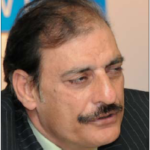 There have been many good and innovative approaches which have been taken by people in northern and southern states of which many people in other states are not aware of. He noted that the Ministry of Urban Development has undertaken an initiative called PEARL- Pear Experience Refl ective Learning, which is a cross sharing and a learning experience among the different cities.
There have been many good and innovative approaches which have been taken by people in northern and southern states of which many people in other states are not aware of. He noted that the Ministry of Urban Development has undertaken an initiative called PEARL- Pear Experience Refl ective Learning, which is a cross sharing and a learning experience among the different cities.
Initially this initiative was started as a pilot in 65 different cities, now it has gradually spread all over the country.The experiences and the learnings of the
cities are shared with one another. As the knowledge sharing between the cities is the biggest gap, a website has been designed where the best practices have been documented. Interactive sessions between the cities are conducted, so that they can interact and learn from each other.
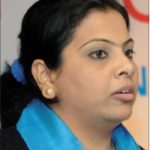 Neelanjana Das Sur, Research Fellow, National Institute of Urban Affairs (NIUA) discussed about the main focus areas of PEARL which are: To act as platform of knowledge sharing, provide information related to urban development, support the output, provide the news and the guidance to the studies. The activities of the programme, which she talked about included documenting the best practices and conducting national or group workshops.
Neelanjana Das Sur, Research Fellow, National Institute of Urban Affairs (NIUA) discussed about the main focus areas of PEARL which are: To act as platform of knowledge sharing, provide information related to urban development, support the output, provide the news and the guidance to the studies. The activities of the programme, which she talked about included documenting the best practices and conducting national or group workshops.
Aparna Das, Senior Technical Expert, GTZ, discussed about the technical support which is provided to the Government of India for managing the data  and said that in the planning of the smart city and infrastructure, proper management of the data is needed. However, the major hurdle is the management of the data itself, because of the non availability of a specifi c policy, she added.
and said that in the planning of the smart city and infrastructure, proper management of the data is needed. However, the major hurdle is the management of the data itself, because of the non availability of a specifi c policy, she added.
She further discussed about the preparation of city sanitation plans (CSPs) which is the policy of the National Sanitation Policy. She informed on how GTZ is supporting the Ministry of Urban Development (MoUD) in preparing the
CSPs in six cities. She stressed on engaging Delhi in improving the conditions of community toilet complexes (CTCs). She said it is important to understand the users of these CTCs and their expectations and willingness to participate in planning, design and operation.
SESSION:SUSTAINED URBAN DEVELOPMENT & PUBLIC PRIVATE PARTNERSHIP
Chair: Professor Chetan Vaidya, Director, National Institute for Urban Affairs Underlining the issues and challenges in sustained urban development and complementing it with IT and Communications, S Regunathan, Member, National Knowledge Commission said until the process reengineering is done in 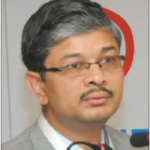 all the government departments, its very diffi cult to bring in transparency and citizen centric approach in governance and mere technology deployment and process automation would not solve the issue. He added that the private sector has to come forward and invest in re-designing the processes, since the government on its own has not been encouraging in its implementation.
all the government departments, its very diffi cult to bring in transparency and citizen centric approach in governance and mere technology deployment and process automation would not solve the issue. He added that the private sector has to come forward and invest in re-designing the processes, since the government on its own has not been encouraging in its implementation.
Commenting on the state of affairs of governance in the Capital city, Regunathan said, “The amount being spent on city of Delhi by various 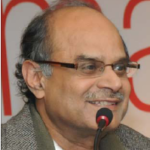 government agencies, including salary of government servants is not less than Rs. 40,000 Crore. Despite, no one can claim that it is a world class city. One of the prime reason is that we don’t have data. We cannot get this aggregate fi gure, anywhere. There the IT comes in a big way.”
government agencies, including salary of government servants is not less than Rs. 40,000 Crore. Despite, no one can claim that it is a world class city. One of the prime reason is that we don’t have data. We cannot get this aggregate fi gure, anywhere. There the IT comes in a big way.”
Professor Ranjit Mitra, Diretor, School of Planning and Architecture said, “The sort of structure of governance that deals with cities, is very desperate. The accountability fi nds no place anywhere in this existing structure. Things will remain the same till the time an enlightened chief minister or mayor of the city takes the charge and drive down the reforms process. Also, we need to re-look  at the 74th Constitutional Amendment Act in a more serious manner.” Speaking on the application of geographical informational system (GIS) in property tax collection, Mukesh Meshram, Vice Chairman, Lucknow Development Authority said, “The measurements of private properties we get from our engineering department, are not precise. Usually, the property measurements are less that their actual size, and so we loose substantial revenue that can be earned through collection of property tax.
at the 74th Constitutional Amendment Act in a more serious manner.” Speaking on the application of geographical informational system (GIS) in property tax collection, Mukesh Meshram, Vice Chairman, Lucknow Development Authority said, “The measurements of private properties we get from our engineering department, are not precise. Usually, the property measurements are less that their actual size, and so we loose substantial revenue that can be earned through collection of property tax.
To tap the leakages, now we are moving in right direction, and trying to automate the whole process with the application of GIS. The initial results are positive and very soon we will be further scaling the project.”
Anurag Goyal, Director, e-Governance, Department of IT, Government of India said the biggest constraint in moving towards smart cities is the lack of quality  infrastructure in the country. Citing some examples, Goyal said, “9% of the industrial output is lost because of power cuts. Although India has the second largest road network in the world- having 33 lakh kilometers of road- just 2% of these road comprises of national highways.” He further proposed that the PPP model could be leveraged to create synergy through utilising the ICT expertise of the private sector and the government fund. The role of the government should shift from executors to regulators and then to facilitators.
infrastructure in the country. Citing some examples, Goyal said, “9% of the industrial output is lost because of power cuts. Although India has the second largest road network in the world- having 33 lakh kilometers of road- just 2% of these road comprises of national highways.” He further proposed that the PPP model could be leveraged to create synergy through utilising the ICT expertise of the private sector and the government fund. The role of the government should shift from executors to regulators and then to facilitators.
Notifying on the preparations for Capital city in light of the Common Wealth Games 2010, Savitur Prasad, Secretary, Department of IT, Government of NCTof Delhi said that considering secure communications system in government to government (G2G) interactions as a key security infrastructure 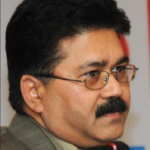 element of advance cities the world over, the Department of IT is endeavoring to provide TErrestrial Trunked RAdio (TETRA) communication system to all the government agencies in the Capital. TETRA communication is one of the most advanced and reliable communication system existing the world over. The deployment includes distribution of 10,000 handsets to government personnel, and 45 Base Stations in the Capital.
element of advance cities the world over, the Department of IT is endeavoring to provide TErrestrial Trunked RAdio (TETRA) communication system to all the government agencies in the Capital. TETRA communication is one of the most advanced and reliable communication system existing the world over. The deployment includes distribution of 10,000 handsets to government personnel, and 45 Base Stations in the Capital.
The services will be provided on rental basis by the Motorola and HCL Infosystems. The PPP model should be designed carefully and if it is, the government need not take much of the fi nancial burden.
Speaking on the prospects of proactive information disclosure through web portals, Prasad said, “The IT has got a major role to play in bringing in transparency in to the system. Municipal Corporation of Delhi (MCD), for example,collects house tax from just eight lakh houses in the capital, although we have already digitised records of 45 lakh houses. Similarly, MCD, on papers, has constructed 28 lakh kilometers of road. However, in reality just 15 lakh kilometers of road has been laid out. With making information available through web portals, the ambiguities can be ironed out.” Moreover, IT gives an opportunity to alter the system of citizen coming to government; to government reaching out to citizens.
R K Gaur, Managing Director, Indraprastha Power Generation Co. Ltd. (IPGCL)  enunciated the application of IT in power sector and said, “With deployment of SAP ERP in IPGCL, we are able to utilise our resources to the optimum level. We have increased our generation capacity through following high standards. We are also working on cleaner energy- solar power energy and in the days to come we will be enhancing its capacity.”
enunciated the application of IT in power sector and said, “With deployment of SAP ERP in IPGCL, we are able to utilise our resources to the optimum level. We have increased our generation capacity through following high standards. We are also working on cleaner energy- solar power energy and in the days to come we will be enhancing its capacity.”
Dr. Erna Surjadi, Regional Advisor Gender, Women and Health, World Health Organisation said, “Information and Communication Technology (ICT) can  contribute in making cities healthier and smarter through its usage in disseminating information on various issues including water sanitation and gender. The self help groups (SHG) are working effi ciently in community development. However, ICT can equip them better through providing latest information and technical know how of the technologies and processes, in their domain.” \\
contribute in making cities healthier and smarter through its usage in disseminating information on various issues including water sanitation and gender. The self help groups (SHG) are working effi ciently in community development. However, ICT can equip them better through providing latest information and technical know how of the technologies and processes, in their domain.” \\
Be a part of Elets Collaborative Initiatives. Join Us for Upcoming Events and explore business opportunities. Like us on Facebook , connect with us on LinkedIn and follow us on Twitter, Instagram.











